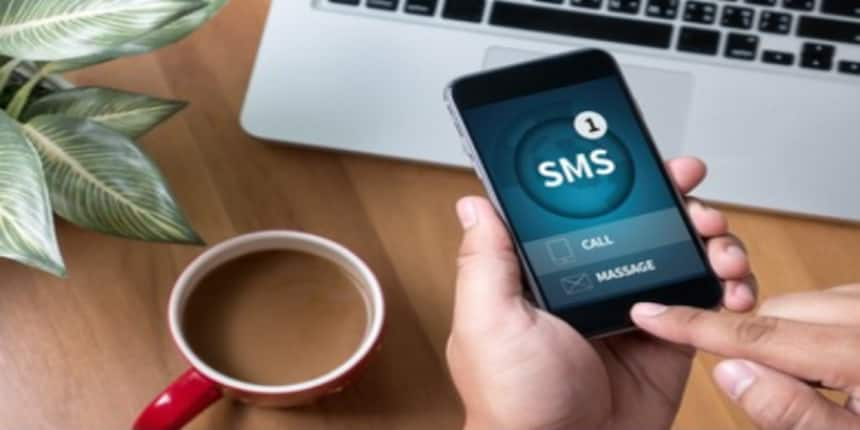SMS Full Form
What is the full form of SMS?
SMS stands for Short Message Service. In essence, it is a structured interaction protocol for text message sharing between mobile platforms. SMS messages can be transmitted via a smartphone, another mobile phone, a computer with an internet connection, etc. It is the application for exchanging information that is most often utilized.
All mobile communications companies in India, including Airtel, Idea, Vodafone, and others, offer SMS services. Users using SMS can send messages that contain up to 160 alphanumeric characters. The SMS service is currently supported by Code Division Multiple Access (CDMA), Global System for Mobile communication (GSM), and Time Division Multiple Access (TDMA) mobile networks.
- What is the full form of SMS?
- History of SMS
- Advantages of SMS
- Issues with SMS
- SMS is classified into two types: A2P and P2P
- Aspects of A2P messaging
- Aspects of P2P messaging
- Are SMS and MMS the same thing?

History of SMS
In the early 1980s, text messaging capability was initially provided to mobile devices. In December 1982, Global System for Mobile communication (GSM) action plan was established with the goal of making mobile systems eligible for the same services as public data networks. This design allowed text messages to be sent and received by handling stations or mobile stations. Finally, in 1984, Friedhelm Hillebrand and Bernard Ghillebaert worked together in a Franco-Germany to create the SMS idea. The fundamental notion behind SMS was to employ telephone-optimized systems and to use signaling routes to transfer messages. Friedhelm Hillebrand established a 160-character alpha-numeric limit for text message length.
Advantages of SMS
The function of SMS is vital in a world where the communication system has transformed into the veins and arteries of society. The following are some benefits of SMS or short message service:
It's one of the most private methods for message transformation. You can be confident that the communications are secure and protected when you transfer them. Your emails that have been dispatched are entirely secure.
Sending messages using SMS is far more discreet than making any phone calls.
It is instantly distributed to all mobile platforms without the need for internet access.
The sender's messages stay on the recipient's phone indefinitely, or at least until the recipient himself deletes them.
Because it is designed for all different types of mobile platforms, it does not require the installation of a specific application.
Issues with SMS
You can't send lengthy messages using SMS, which is one of its biggest drawbacks. There, you may only send brief messages of four to five lines. The current SMS character limit is around 160.
There are acceptable fees associated with the delivery of the SMS; it is not free.
Unsending an SMS is not an option once it has been sent.
SMS is classified into two types: A2P and P2P
SMS may be classified into several categories. A2P and P2P communications are among them. The following are the A2P and P2P SMS.
A2P is an abbreviation for Application to Person messaging, which is used to receive messages from an application.
The second type of communication is P2P, which stands for People to People.
Aspects of A2P messaging
The following are the primary properties of A2P messages:
A2P communications are used to transmit marketing messages, appointment reminders, chatbots, pin codes, and OTPs.
A2P communications are intended for country-specific rules and regulations. In India and France, for example, there are stringent SMS regulations. There are message filtering options for recipients in cases such as late message delivery.
Aspects of P2P messaging
P2P messages are transmitted and received in two-way communication. SMS messages between friends, family, and coworkers are examples.
P2P messages in the United States are subject to strict restrictions and rules imposed by telecom regulations. It does not rely on any kind of application-based messaging.
However, in many countries, application-based messaging tools are used. Texting, for example, is used by customers and service agents.
Are SMS and MMS the same thing?
SMS and MMS are not the same things. As previously discussed, let us now move on to MMS. Multimedia messaging is what MMS stands for. It resembles an expanded SMS system in several ways. You can transfer multimedia files with an MMS that you cannot do with an SMS. The cost of using the MMS distribution mechanism is likewise quite significant.
Frequently Asked Questions (FAQs)
Short Message Service is the abbreviation for this. It is the first way of text messaging, having been created in the early 1980s and designated as the GSM standard in 1985. The most popular messaging technology is considered to be SMS.
Since SMS technology can only transmit and receive text messages composed of numbers, characters, or symbols, it is not possible to send or receive images with SMS services.
Using Long Codes or Toll-Free Numbers, which you may supply immediately from the communications platform as a service (CPaaS) portal, you can be operational in a matter of seconds. Short Codes provisioning requires additional paperwork and carrier clearances, and it often takes 8 to 12 weeks.
Depending on the company's policy, they may remain on the server for three days or three months. Virgin Mobile saves messages for 90 days while Verizon keeps them for up to five days.
On an Android device with Google Drive backups enabled, you may restore your backup to retrieve any deleted text messages.